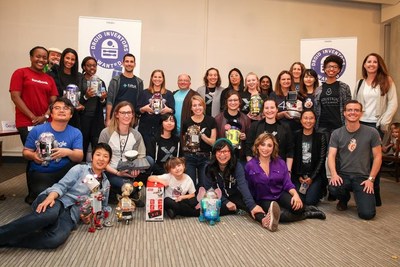Company reports $155.9 million in revenue
GAAP net loss of $10.2 million, or ($0.19) per diluted share, and non-GAAP net income of $4.1 million, or $0.08 per diluted share
Company increasing full year 2017 earnings guidance
MINNEAPOLIS & REHOVOT, Israel — (BUSINESS WIRE) — November 14, 2017 — Stratasys Ltd. (Nasdaq: SSYS), a global leader in applied additive technology solutions, announced financial results for the third quarter of 2017.
Q3 2017 Financial Results Summary:
Revenue for the third quarter of 2017 was $155.9 million, compared to $157.2 million for the same period last year.
- GAAP gross margin was 48.3% for the quarter, compared to a GAAP gross margin of 46.9% for the same period last year.
- Non-GAAP gross margin was 52.5% for the quarter, compared to 54.0% for the same period last year.
- GAAP operating loss for the quarter was $6.9 million, compared to a loss of $19.4 million for the same period last year.
- Non-GAAP operating income for the quarter was $8.1 million, compared to $3.3 million for the same period last year.
- GAAP net loss for the quarter was $10.2 million, or ($0.19) per diluted share, compared to a loss of $20.8 million, or ($0.40) per diluted share, for the same period last year.
- Non-GAAP net income for the quarter was $4.1 million, or $0.08 per diluted share, compared to Non-GAAP net income of $0.1 million, or $0.00 per diluted share, reported for the same period last year.
- The Company generated $4.6 million in cash from operations during the third quarter and ended the period with $302.8 million in cash and cash equivalents.
- Net R&D expenses for the quarter amounted to $21.8 million, representing 14% of net revenues.
“We achieved significant improvements in operating profit during the third quarter compared to the prior year, driven by our continued focus on aligning our resources to support our long-term strategy of deepening customer engagement and developing high-value applications within our key vertical markets,” said Ilan Levin, Chief Executive Officer of Stratasys. ”Our revenue for the third quarter was partially impacted by several large, multi-system orders that were deferred until October. Driven by a more holistic approach to adopting our solutions, we are observing customer behavior characterized by orders for our products that are made up of multiple systems, which introduces higher quarter-to-quarter variations in order timing.”
Product Milestones:
- The H2000 Large Part FDM 3D Production System unveiled at IMTS 2016 as the Stratasys Infinite Build 3D Demonstrator, is transitioning into the commercializing phase. The system is designed for large parts made of engineering-grade thermoplastics, including aircraft interior panels, hybrid structures, composite tooling, and large prototypes. Following the successful early installations with our development partners, The Boeing Company and The Ford Motor Company, we recently completed a commercial delivery of an additional H2000 with a new customer.
- The F123 Series, launched in February 2017, continued to generate very positive traction in the marketplace in the third quarter, as customers increasingly adopt a workgroup oriented approach to design and rapid prototyping that requires a combination of ease-of-use, precision, repeatability, affordability, and material options.
- GrabCAD Print continues to show strong usage and adoption within our installed base, and has been installed by nearly 18,000 users to date. The software solution has been used to print over 116,000 trays of parts since launch of the product in November 2016, as it increasingly has become available across the Company’s installed base of 3D printing systems.
- Announced launch of GrabCAD Voxel Print, a new software solution for the J750 3D printing platform that is designed to take PolyJet’s unique full color, multi-material capabilities and add true voxel level control during the design and 3D printing process. The new solution provides users an unprecedented level of material control to facilitate the creation of advanced structures, digital materials, gradient color patterns, internal properties, and textures for applications that include Academic Research, Product Design, Biomedical, Art, Design and Animation.
- Announced availability of MakerBot Labs, an experimental platform for engineers and developers that gives advanced users the freedom and ability to experiment with new, innovative materials and software settings to develop new capabilities and applications while using MakerBot desktop 3D printing systems. The platform includes the MakerBot Experimental Extruder with interchangeable nozzles and access to custom print modes for experimenting with more advanced materials, the MakerBot Labs Community on Thingiverse, and access to MakerBot APIs for optimization and customization of MakerBot hardware.




 Facebook, Fitbit, Industrial Light & Magic, Instagram, Twitter, Google and Lucasfilm Join Forces With littleBits to Inspire the Next Generation of Inventors at Droidathon
Facebook, Fitbit, Industrial Light & Magic, Instagram, Twitter, Google and Lucasfilm Join Forces With littleBits to Inspire the Next Generation of Inventors at Droidathon



